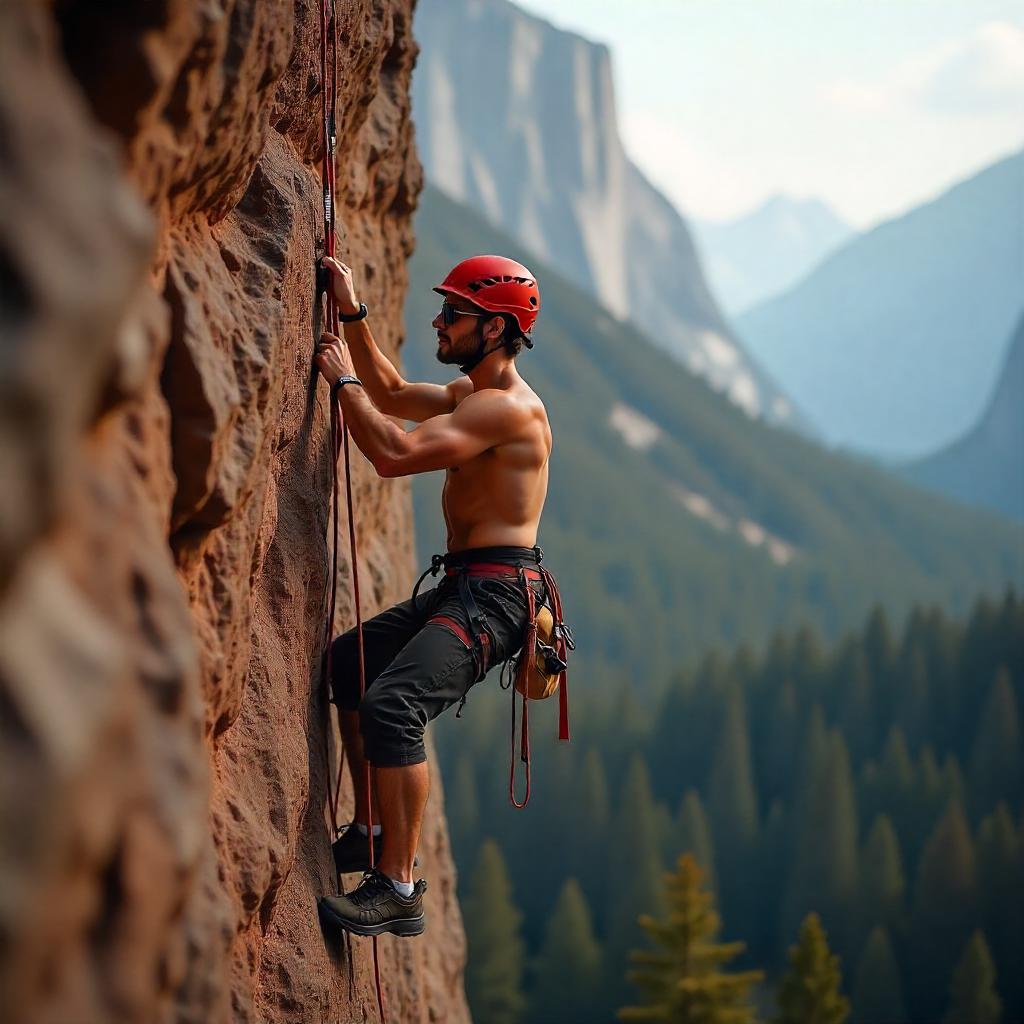Stepping into the world of rock climbing is exhilarating, but the array of gear choices can feel daunting, especially when it comes to selecting your first climbing rope. As your lifeline, a rope is more than just equipment—it’s a critical tool that ensures safety and boosts confidence as you scale walls or crags.
For beginners, navigating terms like dynamic ropes, diameters, and UIAA certifications can be overwhelming. This guide simplifies the process, offering clear, actionable advice on how to choose a rock climbing rope that matches your needs. Whether you’re clipping bolts in a gym or venturing to an outdoor crag, we’ll cover rope types, key features, safety standards, and practical tips to help you make an informed decision. Let’s dive in and find the perfect rope for your climbing journey.
Understanding Climbing Rope Types
Dynamic vs. Static Climbing Ropes: What Beginners Need to Know
The first step in choosing a climbing rope is understanding the difference between dynamic and static ropes, as this decision impacts safety and performance. Dynamic ropes are designed to stretch under load, absorbing the energy of a fall to reduce stress on the climber, anchors, and gear. According to the UIAA (International Climbing and Mountaineering Federation), dynamic ropes must withstand at least five test falls with an 80kg weight, making them the standard choice for rock climbing activities like lead climbing and top-roping. In contrast, static ropes have minimal stretch and are used for rappelling, hauling gear, or rescue operations. Using a static rope for climbing can lead to dangerous jolts during a fall, so beginners should avoid them for dynamic activities.
For new climbers, a single dynamic rope is the best starting point. Marked with a circled “1” on each end, these ropes are designed to be used independently, simplifying belaying for both the climber and their partner. Half ropes (marked “½”) and twin ropes are used in pairs for advanced trad or alpine climbing, requiring complex management that’s unsuitable for beginners. For example, half ropes involve clipping one strand to protection on the left and the other to the right to reduce rope drag, while twin ropes require clipping both strands together. These systems are lighter but demand experience, so stick with a single dynamic rope for versatility and ease.
- Key Statistic: A 2023 UIAA report noted that 95% of climbing ropes sold for recreational use are dynamic single ropes, reflecting their popularity among beginners and intermediates.
Key Factors to Consider When Choosing a Rope
How to Pick the Best Climbing Rope for Your Needs
Selecting a climbing rope involves balancing several factors: diameter, length, dry treatment, and special features. Here’s a breakdown to guide your decision.
Rope Diameter
The diameter of a single dynamic rope, typically ranging from 8.5mm to 11mm, affects its durability, weight, and handling. For beginners, thicker ropes (9.4mm–10.2mm) are ideal because they offer:
- Durability: A higher sheath percentage (the outer layer protecting the core) resists abrasion, especially during frequent top-roping or rough outdoor routes.
- Ease of Handling: Thicker ropes provide more friction in belay devices, making them easier to control for novice belayers.
- Confidence: A robust feel reassures new climbers, reducing gear-related anxiety.
For instance, the Mammut 9.5 Crag Classic is a favorite among beginners for its durability and smooth handling, balancing thickness with performance. Thinner ropes (8.5mm–9.2mm) are lighter and more pliable, suited for advanced climbers tackling long approaches or alpine routes, but they wear faster and require precise handling, which can challenge beginners.
- Data Point: Outdoor GearLab’s 2025 rope tests found that 9.8mm ropes are the most popular for beginners, offering a 30–40% longer lifespan than sub-9mm ropes under similar conditions.
Rope Length
Rope length is critical for safety and practicality. A 60m rope is the standard choice for most beginner needs, covering indoor gym routes (typically 10–20m) and many single-pitch outdoor crags (up to 30m). To safely lower or rappel, your rope must be at least twice the length of the route, as it doubles back through the anchor. For example, a 30m route requires a 60m rope. Some outdoor areas, like certain multi-pitch crags, may require a 70m rope, so consult local guidebooks or experienced climbers to confirm route lengths.
- Real-Life Example: A beginner in Colorado purchased a 70m rope assuming it was necessary for all outdoor climbing, only to find that their local crags’ single-pitch routes were easily managed with a 60m rope, saving weight and cost after consulting a local guide.
- SEO Tip: Targeting “best rope length for rock climbing” captures searchers researching specific route requirements.
Dry Treatment
Dry-treated ropes are coated to repel water, dirt, and grime, which is vital for outdoor climbing in wet or dusty environments, such as desert crags or alpine routes. A wet rope can absorb up to 50% of its weight in water, reducing elasticity and increasing handling difficulty, according to UIAA water repellency tests. Certified dry ropes absorb less than 5% water, maintaining performance in adverse conditions. For indoor climbers, dry treatment is less critical, but it can extend rope lifespan by repelling dirt. The Sterling Velocity Xeros Dry 9.8 is a beginner-friendly option with dry treatment for occasional outdoor use.
Special Features
Look for features that enhance usability and safety:
- Middle Markers: A color change or black mark indicates the rope’s midpoint, crucial for rappelling or lowering.
- Unicore Technology: Bonds the core and sheath to prevent slippage, as seen in Beal ropes, enhancing durability.
- Red Flag Treatment: Bright dye on the final 5m (e.g., Maxim Agility 9.1) warns of approaching rope ends, preventing accidents during rappels.
Climbing Rope Safety Standards: What to Look For
Safety is paramount when choosing a climbing rope, and adherence to UIAA and EN 892 standards ensures reliability. These standards test ropes for:
- Fall Rating: The number of UIAA test falls (using an 80kg weight) a rope can withstand (minimum 5 for single ropes). Most modern ropes exceed this, with some enduring 10–15 falls.
- Impact Force: The force (in kN) transmitted to the climber during a fall. Lower values (e.g., 8kN) are gentler on the body and gear.
- Dynamic Elongation: The stretch during a fall, capped at 40% to prevent excessive stretching that could lead to ground contact.
To verify a rope’s safety, check for UIAA or EN 892 certification on the packaging or rope ends. A 2023 incident in Yosemite highlighted the importance of certified ropes: a beginner’s fall was safely absorbed by a UIAA-certified rope with an 8.5kN impact force, preventing injury.
- Statistic: A 2024 Climbing Magazine survey found that 90% of climbers prioritize UIAA certification when purchasing ropes, underscoring its importance for safety-conscious buyers.
Beginner’s Guide to Choosing and Caring for Your Rope
Matching Rope to Climbing Style
Your climbing environment influences rope choice:
- Indoor Climbing: Choose a thicker (9.8mm–10.2mm) single rope for durability during frequent top-roping. The Beal Karma 9.8 is budget-friendly and robust for gym use.
- Outdoor Sport Climbing: A 9.4mm–9.8mm rope balances weight and durability for single-pitch routes. Consult local climbers or guidebooks to match rope length to crag requirements.
- Expert Tip: AMGA-certified instructor Katie from Joshua Tree advises, “Beginners should prioritize a rope that feels secure and is easy to manage, allowing them to focus on technique rather than gear.”
Rope Care Tips
Proper maintenance extends your rope’s lifespan, typically 3–5 years with moderate use:
- Use a Rope Bag or Tarp: Protects against dirt and abrasion.
- Avoid Stepping on the Rope: Prevents grinding dirt into fibers, which can weaken them.
- Clean Regularly: Wash with mild soap and lukewarm water, drying in the shade to avoid UV damage.
- Inspect for Wear: Check for fraying, flat spots, or core exposure. Retire after a severe fall or significant wear.
- Store Properly: Keep in a cool, dry place away from sunlight and chemicals.
- Data Point: A 2025 REI study found that proper rope maintenance can extend lifespan by up to 25%, saving climbers money over time.
Best Rock Climbing Ropes for Beginners in 2025
Based on expert reviews and user feedback, here are top beginner-friendly ropes for 2025:
- Mammut 9.5 Crag Classic
- Diameter: 9.5mm
- Length: 60m
- Pros: Durable, easy to handle, versatile for gym and crag.
- Cons: Slightly heavier than thinner ropes.
- Price Range: $150–$180
- Beal Karma 9.8
- Diameter: 9.8mm
- Length: 60m
- Pros: Budget-friendly, excellent abrasion resistance.
- Cons: No dry treatment in base model.
- Price Range: $120–$150
- Sterling Velocity Xeros Dry 9.8
- Diameter: 9.8mm
- Length: 60m
- Pros: Dry-treated, great for outdoor transitions.
- Cons: Higher cost than non-dry ropes.
- Price Range: $200–$230
| Rope Model | Diameter | Length | Dry-Treated | Price Range |
|---|---|---|---|---|
| Mammut Crag Classic | 9.5mm | 60m | Optional | $150–$180 |
| Beal Karma | 9.8mm | 60m | No | $120–$150 |
| Sterling Velocity Xeros | 9.8mm | 60m | Yes | $200–$230 |
- Source: Treeline Review’s 2025 rope rankings and user reviews from Oliunid.
FAQs About Choosing a Rock Climbing Rope
- What’s the best rope length for beginners? A 60m rope suits most indoor and single-pitch outdoor routes. Check local route lengths for outdoor climbing.
- Do I need a dry-treated rope? Optional for indoor climbing but recommended for outdoor use to repel water and dirt.
- How do I know if a rope is safe? Verify UIAA or EN 892 certification on the rope or packaging.
- When should I replace my rope? Retire after a severe fall, significant wear, or 3–5 years of moderate use, per manufacturer guidelines.
- Source: Aggregated from Reddit r/climbing and REI’s Q&A sections.
Conclusion
Choosing the perfect rock climbing rope as a beginner is about balancing safety, durability, and ease of use. A single dynamic rope with a 9.4mm–10.2mm diameter, 60m length, and UIAA certification is ideal for most new climbers, offering versatility for gym and outdoor single-pitch routes. Features like middle markers and dry treatment enhance usability, while proper care—using a rope bag, regular cleaning, and thorough inspections—extends your rope’s lifespan. By selecting a rope like the Mammut 9.5 Crag Classic or Beal Karma 9.8 and learning basic maintenance, you’ll build confidence and focus on mastering climbing techniques. Ready to start your climbing journey? Visit trusted retailers like REI or Climbing Anchors to explore UIAA-certified ropes, and join a local gym to learn hands-on rope management from instructors. Share your climbing experiences in the comments below or connect with local climbers to discover the best ropes for your area!




